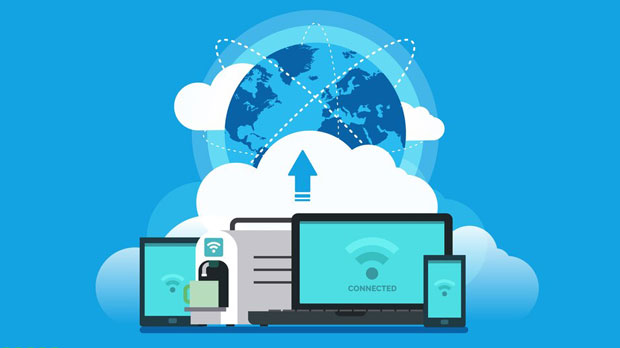In today's digital era, privacy, security, and anonymity have become crucial for online activities, especially for businesses and individuals dealing with large-scale data scraping, web automation, or other internet-related tasks. One essential tool for achieving this level of privacy and security is the use of proxies. There are two main types of proxies commonly used: free proxies, like the PYPROXY Free Proxy List, and paid proxy pools. While both types of proxies offer solutions to maintain anonymity, they have different levels of performance, reliability, and security. In this article, we will explore the key performance differences between these two options to help businesses and individuals make informed decisions on which type of proxy to use for their needs. 1. Performance ReliabilityOne of the main differences between PyProxy Free Proxy List and paid proxy pools lies in the performance reliability. Free proxies often come with a higher risk of instability. This is because free proxies are typically shared among many users, and they may suffer from slow speeds, frequent disconnections, or even downtime. In contrast, paid proxy pools tend to offer much more consistent performance, as they are generally designed to handle high demand and are less likely to be overcrowded.2. Speed and LatencyWhen it comes to speed and latency, free proxies from PyProxy Free Proxy List are often slower compared to their paid counterparts. Free proxies are subject to heavy traffic since multiple users are sharing the same proxy server. This can lead to significant delays and higher latency, which is especially problematic for businesses that rely on fast connections for web scraping, automation, or other time-sensitive tasks.Paid proxy pools, on the other hand, generally offer faster speeds and lower latency. These proxies are designed to handle the needs of premium users and are often equipped with better infrastructure. Furthermore, paid services allow you to choose from a wider selection of proxy locations and IPs, enabling you to achieve faster connections based on your specific requirements.3. Security and AnonymitySecurity is another critical factor when comparing PyProxy Free Proxy List and paid proxy pools. Free proxies, while cost-effective, often come with security risks. Since they are free to use, there is little to no control over the quality and maintenance of these proxies. They can be misconfigured or even compromised, making them vulnerable to data leaks or malicious attacks. Moreover, free proxies may log user activity or inject ads into the pages you visit, compromising your privacy.Paid proxies, however, offer enhanced security and anonymity. Reputable paid proxy providers usually invest in high-quality, secure infrastructure and implement strict privacy policies to protect users. Many paid services also offer dedicated proxies or rotating IPs, which further reduce the risk of your activity being tracked or flagged by websites.4. IP Pool Size and DiversityThe size and diversity of the proxy pool are important factors that affect the overall performance. Free proxies typically have a small pool of IP addresses that are shared among multiple users. As a result, these IPs can quickly become flagged by websites and may be blacklisted, reducing the effectiveness of the proxy. Furthermore, free proxies tend to offer limited geographic locations, which can restrict access to certain regions or services.In contrast, paid proxy pools have a much larger and more diverse selection of IP addresses. This diversity allows users to choose proxies from various countries and regions, improving their ability to bypass geo-restrictions and access region-specific content. Paid proxy services also offer more control over the IP rotation process, ensuring that your traffic is less likely to be blocked or flagged by websites.5. Customer Support and MaintenanceWhen using free proxies like the PyProxy Free Proxy List, users often have to rely on community forums or self-troubleshooting for support. Free proxies are generally not maintained by a dedicated team, and any issues that arise may take longer to resolve. Users may encounter problems like slow speeds, connection errors, or IP bans without any recourse to customer support.On the other hand, paid proxy services typically offer customer support and regular maintenance. Many premium proxy providers have 24/7 customer support teams available to assist with any issues, and they actively monitor and maintain their proxy networks to ensure optimal performance. This level of support can be invaluable, especially for businesses that rely on proxies for mission-critical tasks.6. Cost ConsiderationsCost is always a factor when choosing between free and paid proxy services. Free proxies are attractive because they come with no monetary cost. However, as we have seen, this comes with trade-offs in terms of performance, security, and reliability. While free proxies may be suitable for casual users or those with minimal needs, they are often not a sustainable solution for businesses or individuals who require consistent performance and high levels of security.Paid proxy pools, although they come with a subscription fee, offer a more reliable and secure service. The cost varies depending on the provider and the type of service, but businesses or high-volume users often find that the investment in paid proxies pays off in terms of improved performance, security, and support.7. Use Cases and Ideal ScenariosFinally, it is essential to consider the ideal use cases for each type of proxy. Free proxies like the PyProxy Free Proxy List may be suitable for users who need proxies for occasional or low-traffic activities, such as browsing anonymously or accessing simple content. They may also be useful for individuals experimenting with proxy usage or those who cannot justify the cost of a paid proxy service.Paid proxy pools are better suited for businesses or individuals with more demanding needs. If you require high speeds, robust security, a diverse range of IPs, and reliable customer support, paid proxies are the clear choice. They are essential for tasks such as web scraping, SEO monitoring, ad verification, and other data-driven activities where performance and security are paramount.In conclusion, while both PyProxy Free Proxy List and paid proxy pools offer valuable benefits, the key differences in performance, security, and reliability make paid proxies a better choice for businesses and high-demand users. Free proxies may be sufficient for casual use, but for anyone relying on proxies for professional or time-sensitive tasks, investing in a paid proxy service is often a wise decision. With better speeds, enhanced security, and robust support, paid proxy pools provide a more reliable and sustainable solution for navigating the complexities of the digital world.
Nov 10, 2025



































































